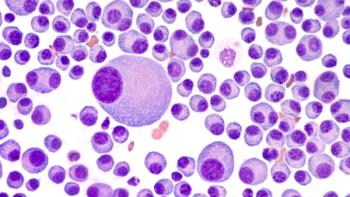
Medicare Coverage Gap Causes Many to Stop Cardiovascular Drugs
Patients who had to pay for their own medications due to a Medicare coverage gap were more likely to stop taking heart drugs, according to a new study.
Patients who had to pay for their own medications due to a Medicare coverage gap were more likely to stop taking heart drugs, according to a new study.
Medicare beneficiaries who had to pay for their own prescription drugs once they entered a coverage gap were significantly more likely stop taking medications for cardiovascular conditions than beneficiaries who had supplemental coverage or assistance, according to the results of a study published online on April 17, 2012, in Circulation: Cardiovascular Quality and Outcomes.
The Medicare prescription drug benefit, which went into effect at the beginning of 2006, includes a coverage gap in which the beneficiary is responsible for all prescription drug costs unless they have supplemental coverage or assistance. For the current study, researchers followed 122,255 Medicare beneficiaries with cardiovascular conditions who reached the spending gap threshold in 2006 or 2007. (In 2006, the coverage gap began after initial coverage of $2250 in prescription drug costs and continued until a catastrophic spending threshold of $3600 was reached. In 2007, the gap stretched from $2400 to $3850.)
The researchers matched 3980 of these beneficiaries who reached the coverage threshold and had no supplemental coverage or assistance (defined as “exposed”) with 3980 who reached the coverage threshold and had supplemental coverage or assistance (defined as “unexposed”). Most of the participants had hypertension, and about one-third had heart failure—both of which can be fatal without proper medical and prescription drug treatment.
The researchers found that the exposed beneficiaries were 57% more likely than the unexposed beneficiaries to discontinue their cardiovascular drugs, an effect equivalent to an additional 14 drugs discontinued per 100 person-years. This effect held regardless of whether the drugs were generic or branded. Exposed beneficiaries taking beta-blockers were 68% more likely to stop taking them, and exposed beneficiaries taking statins were 116% more likely to stop taking them.
Exposed beneficiaries were also more likely to die than unexposed beneficiaries, although this result did not reach statistical significance. Likewise, there were no significant differences between exposed and unexposed beneficiaries for other outcomes. The researchers note that the lack of statistically significant impact on health outcomes may have been due to the fact that the average period during which exposed beneficiaries went without coverage was relatively short at 119 days.
The researchers also note that the Obama administration’s 2010 health care reform law gradually phases out the coverage gap over the next decade. In 2011, for example, exposed Medicare beneficiaries received a 50% discount on branded drugs and a 7% discount on generic drugs when in the coverage gap. The researchers also note, however, that recent proposals in Congress and the pending Supreme Court challenge to the health reform law could reinstitute the coverage gap in full.
To read the study, click
Newsletter
Stay informed on drug updates, treatment guidelines, and pharmacy practice trends—subscribe to Pharmacy Times for weekly clinical insights.




















































































































































































































